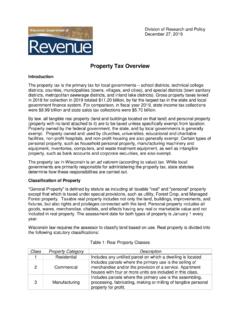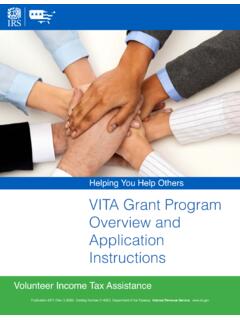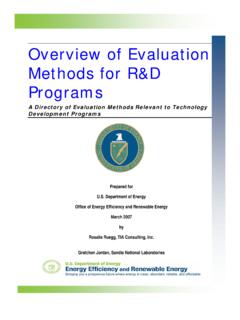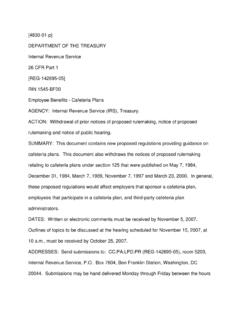Transcription of Project Management Policy and Procedure - Corby
1 Special Projects Policies and Procedures Project Management Policy and Procedure Author(s): Laura Graham Peter Griggs Approved SMT: October 2006 Issue Date: October 2006 Policy Review Date Ref: Contents: 1. Purpose and Scope 2. Aims and Objectives 3. Defining a Project 3. Procedure 4. Project Processes 5. Appendices Other relevant policies/ documents Risk Management Strategy Corporate Procurement Strategy and Approved Officers Pack 1. Purpose and Scope Corby Borough Council's 'One Corby ' strategy identifies better monitoring and Management of projects as one of its key corporate priorities. This includes moving towards tighter financial Management , procurement, asset and risk Management and setting and meeting targets for achieving priorities.
2 The Council is seeking to fulfil this objective through the introduction of a corporate wide approach to Project Management . This approach will apply to all projects defined by the SMT as 'Corporate Projects'. The basis of this approach recognises internationally known Project Management framework, PRINCE2 (Projects in Controlled Environments). PRINCE2 is an amalgamation of experience and learning obtained from Project Management professionals and is a framework of best practice in the field. 2. Aims and Objectives The Policy and Procedure will enable service areas to understand the steps required to initiate, monitor, deliver and evaluate projects in a controlled way. This will in turn ensure that the Council: Special Projects Policies and Procedures is able to meaningfully control its projects, understand the justification for the Project , identify the resources necessary for its delivery evaluate their success, demonstrate the above to outside bodies.
3 The document will provide clear guidance and best practice on:- Defining a Project and producing a business case The processes employed to execute a successful Project . Roles and responsibilities of the Project team 3. Defining a Project A Corporate Project is defined as containing the following features: I. A clearly defined business case which is regularly reviewed to assess its on going viability II. A defined start and end. III. Defined and measurable outcomes. IV. A Project plan containing activities in order to achieve the outcomes specified and against which progress can be measured V. An analysis of risk and steps to avoid or mitigate VI. A defined budget , or other definition of resources available to complete the Project VII. A temporary Management control structure with clear and accepted roles and responsibilities of the Project Management team 4.
4 Procedure Business Case A business case is the basis of any Project and without a viable and approved business case, a Project will not be initiated. The business case is completed to aid corporate Management /members assess whether the Project should be initiated and is developed in response to a Management need. The business case includes:- reasons for the Project , different options considered including an evaluation of alternative Project methods, the measurable benefits to the organisation, possible disbenefits to the organisation of carrying out Project a summary of the key risks, costs and investment appraisal, the time scale and an evaluation of the document. The business case will be regularly reviewed at every significant decision point during the Project and if at any point the business case is no longer viable the Project can be discontinued.
5 Special Projects Policies and Procedures Management Structure Corporate projects must have a Management structure with defined and accepted roles and responsibilities. Some of the roles may be shared depending on the size and type of Project . Key roles are:- Project Sponsor who is a member of the Management team with corporate responsibility for the delivery of the Project . The Sponsor will normally chair the Project Board and ensure that the Project is appropriately resourced. Project Manager who is responsible for:- planning and the day to day running of the Project within the terms of the Project brief providing all necessary reports. gaining approval for any deviation from the Project brief The Project Board oversees the Project progress through regular highlight reports submitted by the Project manager.
6 A balance must be drawn between unnecessary and time consuming meetings and the need to monitor progress. A minimum of 1 meeting per month should be the norm unless circumstances demand other wise. The Project must be reviewed at the end of each stage to monitor viability and a detailed plan for the following stage produced. ensures that appropriate resources are available. monitors the continued relevance of the Project and makes a recommendation to the SMT should circumstances indicate that the Project should be terminated or the brief significantly modified. The make up of the board will depend on the nature of the Project , its profile, cost and risks. Minimum requirements will be a Project Sponsor, End User Representative, and the Project Manager. For more complex, high value/risk projects additional roles might be nominated depending on need.
7 The Project Brief The Project brief acts as the 'contract' between Project Management team and corporate Management . It describes the Project 's objectives and scope, the desired outcomes and what is to be excluded from the Project . It incorporates the business case but also states the end users expectations and the acceptance criteria the specific requirements by those the Project is serving. The brief will also provide an indication of the resources that will be required in order to complete the Project . These may be budgetary or other resources such as staff time. The staff time may be within the Project team or within other departments. The Project brief must be agreed by the end users, senior Management team and the proposed Project manager. The Project Plan A Project plan must be completed and followed throughout the Project .
8 The plan must include 'who' 'when' and 'how' specific targets should be achieved. The dependency between targets how a slip in time/money/quality on one item may effect another element of the Project must be clearly shown and the Project plan clearly broken down into convenient Management stages. Project Stages are key sections or milestones of the Project and will be defined by the Project Manager. The Project must be controlled systematically with an agreed reporting and monitoring structure approved at start up of the Project . The Project plan will form the basis of control and will be used by the Project manager to monitor actual progress Special Projects Policies and Procedures against projected. The Project manager will then report at appropriate control points to the Project Board in the form of a highlight report.
9 This will enable the Project Management to consider problems and initiate corrective action and authorise the continuation of the Project . Risk Assessment A formal assessment of risk will be undertaken and incorporated into a Risk register within the framework expressed in the corporate Risk Management Strategy. This will be reviewed throughout the Project and form a regular part of the Project Managers report. Key to a risk Management is consideration of steps to reduce or make provision for the risks identified. Project Managers Report The Project manager's report to the board will contain the following headings: Executive Summary Progress and Programme Costs Risk Client Decisions including any requests for change to the outputs required in the brief Work Plan for Next Period Project Closure It is important to close a Project once completed and gain formal sign off from the Project board.
10 A Closure Report will be provided to the board which will demonstrate:- that the objectives identified in the Project Brief have been met, the final budgetary position, identify any follow on actions or lessons learnt, request formal sign off confirm that, where appropriate, the Project has been handed over to the end user. All documentation must be archived appropriately. 5. Project Processes A corporate Project will have the following outline: . This decision will normally arise from a need within the organisation. SMT are likely to have an outline business case as a basis for this decision. Project Manager selected and instructed to produce Project Brief The brief will further develop and refine the Business case and incorporate this into the Project Brief, which forms the basis of the Project manager's actions and objectives.







